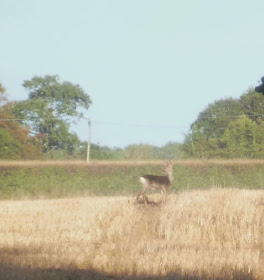I have to admit that the completion of the German Division, although fun and something I have always wanted to do, was a major indulgence on my part and a slight variation on my Talavera project plan. That variation being, that I intended to complete units for scenarios that would build up to the full battle and the German Division don't feature until scenario three, and there are other units required for scenario one that remain un-painted.
That being said I am hoping to have scenario one up and running around Xmas this year so please bear with me and as recompense, I thought I would share some pictures of the German Division as a whole. I should add that for Talavera the two battalions of the 4th Polish Infantry Regiment were under the command of Laval, but as they were an attachment and will be present in scenario three I will add them later.
2nd [German] Infantry Division
GdD Jean-Francois, Baron Leval,
GdD Jean-Francois, Baron Leval,
Brigade
OB Heinrich, Freiherr von Porbeck,
Baden Infantry Regiment Gross-Herzog Nr. 4: OB Heinrich, Freiherr von Porbeck, 1st Battalion
Baden Infantry Regiment Gross-Herzog Nr.4: OB Heinrich. Freiherr von Porbeck, 2nd Battalion
OB Heinrich, Freiherr von Porbeck,
Baden Infantry Regiment Gross-Herzog Nr. 4: OB Heinrich, Freiherr von Porbeck, 1st Battalion
Baden Infantry Regiment Gross-Herzog Nr.4: OB Heinrich. Freiherr von Porbeck, 2nd Battalion
Nassau Infantry Regiment Nr. 2: OB August von Kruse. 2nd Battalion
Baden Foot Battery: 2 - 7pdr howitzers. MAJ Franz-Friedrich-Christian von Steimnetz
Baden Foot Battery: 2 - 7pdr howitzers. MAJ Franz-Friedrich-Christian von Steimnetz
Brigade
GM David-Hendrik Chasse,
GM David-Hendrik Chasse,
Composite Dutch Infantry Regiment: OB Baron de Grave,1/2nd Infantry Regiment
Composite Dutch Infantry Regiment: OB Baron de Grave, 2/4th Infantry Regiment
Dutch Horse Artillery Battery Nr.3: 6 guns, HPT Hendrik-Rudolph Trip
Composite Dutch Infantry Regiment: OB Baron de Grave, 2/4th Infantry Regiment
Dutch Horse Artillery Battery Nr.3: 6 guns, HPT Hendrik-Rudolph Trip
Brigade
GdB Balthazard
Hessen-Darmstadt Infantry Regiment Gross- und Erbprinz Nr. 4: GM Georg-Johann Schaffer von Bernstein, 1st Battalion
Hessen-Darmstadt Infantry Regiment Gross- und Erbprinz Nr. 4: GM Georg-Johann Schaffer von Bernstein, 2nd Battalion
Confederation of the Rhine Battalion Nr.3 (Frankfurt) OBL von Welsch
Hessen-Darmstadt Foot Batterie: 4 - 6pdrs, LT Ludwig Venator
GdB Balthazard
Hessen-Darmstadt Infantry Regiment Gross- und Erbprinz Nr. 4: GM Georg-Johann Schaffer von Bernstein, 1st Battalion
Hessen-Darmstadt Infantry Regiment Gross- und Erbprinz Nr. 4: GM Georg-Johann Schaffer von Bernstein, 2nd Battalion
Confederation of the Rhine Battalion Nr.3 (Frankfurt) OBL von Welsch
Hessen-Darmstadt Foot Batterie: 4 - 6pdrs, LT Ludwig Venator
Front Row- left to right, Baden artillery, Baden Infantry (2 battalions), Dutch Infantry (2 battalions), Dutch Horse Artillery. Middle row, Nassau Infantry (2 battalions), Hesse Darmstadt Infantry (2 battalions), Hesse Darmstadt Artillery, Back Row Frankfurt battalion.
 |
| Von Porbeck's brigade |
 |
| Chasse's brigade of Dutch |

 |
| Grandjean's brigade |
For close ups of the individual units just click on the links in the order of battle above.







































